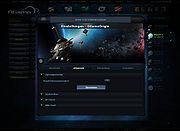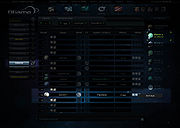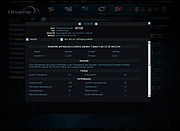Espionagem
Como já deve ter-se apercebido, o OGame é sobretudo recolher o máximo de recursos que se conseguir, para investir em edifíciose estruturas – ou seja, em pontos. Além da produção das minas, que é fácil de conseguir, também pode conseguir recursos através de ataques, ou seja, atacando planetas de outros jogadores, que vai ser explicado com mais profundidade no próximo capítulo Ataques. Mas nem todos os jogadores são alvos válidos, e nem toda a gente deve ser atacada. A espionagem fornece a possibilidade de verificar quantos recursos, naves e defesas existem nos planetas vizinhos.
Quais são os requisitos ?
Para usar este recurso do jogo, precisa da Tecnologia de Espionagem. Em primeiro lugar, a pesquisa, que está disponível desde muito cedo (requisitos: Laboratório de Pesquisas nível 3). O primeiro benefício que recebe com a pesquisa da tecnologia de espionagem é que consegue ver mais informações acerca das frotas cujo o destino é um dos seus planetas – numa primeira instância só consegue ver que uma frota vão ao encontro dum seu planeta. Consegue ver o número total de naves no nível 2, o tipo de naves que a frota leva no nível 4 e no nível 8 consegue ver quantas naves e quantas de cada tipo estão na frota. Esta informação é de grande importância por permite reagir a um ataque e defender os seus recursos e planetas da melhor maneira possível.
Mas a pesquisa é também importante para a espionagem, como o próprio nome indica. Precisa do nível 2 para construir sondas de espionagem, e o nível influência na quantidade de informação que consegue numa espionagem a um inimigo e se as sondas sobrevivem durante a espionagem ou não.
Como espiar?
Se tiver sondas de espionagem, tem a possibilidade de espiar um inimigo. O método mais rápido é clicar no símbolo da espionagem na mesma linha do planeta que pretende espiar. Após essa acção, a(s) sonda(s) vão espiar o planeta automaticamente ( a quantidade de sondas a enviar pode ser alterada nas Opções > Geral , consultar Definições da Conta) para mais informações. Alternativamente também pode enviar mais sondas em missão espiar para determinada coordenada usando a opção do menu Frotas, ai pode alterar o número de sondas manualmente.
Tradução em Progresso
Translation in Progress
Which information can I gather?
If you spy on an enemy, you will get all available information with an espionage report, which is grouped into a total of 5 blocks. First of all there are the resources - the amount of the present resources, as well as the energy production, which will be reported in every case; then information about the fleet, defensive structures and as well as buildings and researches. To gather more information than just about the resources, you have to heighten your espionage, either by researching a higher espionage technology than the enemy, or by sending more probes at the same time. You can calculate easily how many probes you have to send to gather the designated information:
| Resources | = 1 probe |
| Fleet | = (difference of the espionage technology level) ^ 2 + 2 |
| Defense | = (difference of the espionage technology level) ^ 2 + 3 |
| Buildings | = (difference of the espionage technology level) ^ 2 + 5 |
| Research | = (difference of the espionage technology level) ^ 2 + 7 |
If the own espionage technology is three levels higher than the technology of the enemy, one probe will suffice to gather all information. After you see all designated information in your espionage report, you can balance, if it is a profitable target and if so, dispatch your fleet.
What is counter-espionage ?
If you get an espionage report, then at the end there will always be the value of counter-espionage, which is between 0 % and 100 %. This value specifies the chance of detecting and destroying your probes by an enemy, who you spy on. The higher the chance, the more likely it is that your probes will be detected and engage in battle with the defender's ships and defences present at the planet. The counter-espionage does not affect the espionage report, which will be delivered even if the probes are detected and destroyed.
The exact formula, on how to calculate that value is still unknown so far, because it is obvious that the coincidence plays a major role (with the same combination, there are often very different values), so it is not very important. As a matter of fact, three different elements have an effect on the counter-espionage: The number of espionage probes, the difference between your own and the enemies’ espionage technology, as well as the number of ships on the planet. If there is no fleet on the spied colony, the probes will return in every case; the more ships the higher is the chance that they can be shot down. If your espionage technology is a lot higher than your enemy's, than there is a higher chance you will save your probes. On the other hand, if it is much lower, only a few cargoes and satelites can detect your probes. It is also very risky to send a huge number of espionage probes, because they can be detected easily and that means of course more loss. Because of that you should only fly with more than 2 or 4 probes only if the target is of great value. If your probes are detected, there will automatically be a fight against the units on the planet. The probes usually will not survive the first round, because they are lightly armored and unarmed, that is why you will not get a combat report.
What do I have to consider ?
The opposing player gets a message that you spied him – most of the players are not amused that you are interested in their planet. So you should only spy on a player, for who you are a match. Let sleeping dogs lie, because it is no use to provoke a campaign of vengeance.


